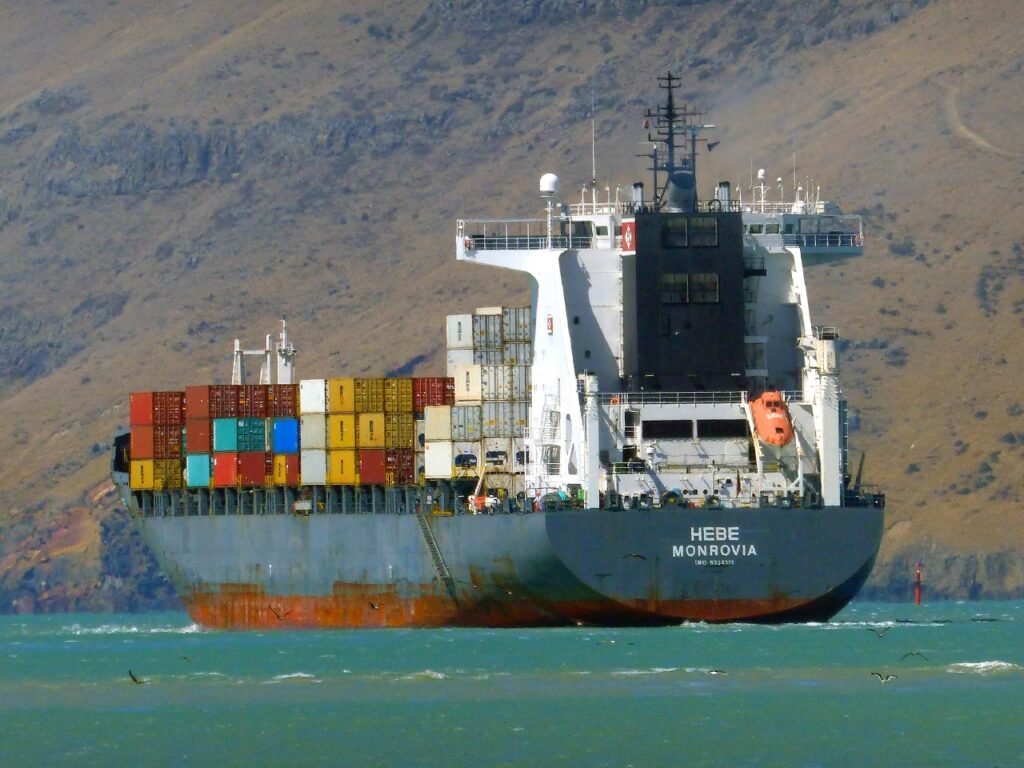On a per gram or per ounce base, Manuka honey must be the most expensive honey in the world, also based on the size and volume of its global sales.
The term Mānuka is a Māori word, which is the native tongue or indigenous language of New Zealand.
For decades, maybe even hundreds of years the Māori already appreciated the value of both the Manuka tree and the honey which would’ve been collected by bees who were in locations where Manuka bush was prevalent.
Some might say it’s expensive because it works.
Also see the MGO vs UMF table from the UMHA.
When I say works, I mean there is a lot of scientific backing that supports the healthy properties of Manuka honey.
As a natural food, this is very attractive to a lot of people seeking natural remedies without needing to move onto pharmaceuticals.
But telling you why Manuka honey has health benefits, what those health benefits are, I’ll put in another post.
I can say that my girl friends and I find it wonderful as a healer, skin repairer and all round miracle in our wellness regimes.
This post is my explanation, and the extensive research that I’ve done explaining to you why Manuka honey is so expensive.
It’s easy to find a 250-gram or around a 9 ounze jar for anywhere in excess of $300 (US). It seems that the higher the numbers on the front that you see, the higher the value of the Manuka honey.
To understand why Manuka honey is so expensive, we really need to go back to the beginning of the journey.
1: Manuka is often found in hard to reach places
The Manuka tree or bush is from the Latin name, Leptospermum scoparium. This bush is found mostly in very remote areas and tends to survive well in very harsh conditions.
If you travel through New Zealand through a lot of the thermal and volcanic parts of New Zealand, which are famous for boiling mud, boiling water and thermal activity, you will often see a lot of Manuka bush around as it’s one of the only things that can survive in those environments.
Likewise, if you travel to the far North of New Zealand to the very top where the heat is high, the conditions are windy and harsh, you’ll also find Manuka thriving there. And in fact, scientists have been doing research into what makes the Manuka bush survive so well in these conditions.
If you travel to the tops of the mountains in some of the South Island locations of New Zealand, you’ll also find that the Manuka tree is one of the only trees that seems to at least survive and often thrive in those conditions.
Because of this remote and often harsh environment, it also means that placing hives near the Manuka tree makes it often a difficult and expensive exercise.

Generally speaking, you will find a lot of higher-grade Manuka honey comes from these most wild and remote locations.
There’s no perfect science to getting Manuka honey that has high MGO (Methylglyoxal) levels, and there’s a lot of effort that goes into collecting the honey.
The location of these hives can often only be reached by helicopter, by heavy-duty four-wheel drive trucks, that have to often travel long distances to collect the honey before returning it to the production facilities.
This cost is not only high, but in seasons where the Manuka honey and Manuka tree bloom is short, means there can be a lot of expense with very little return.
2: The manuka tree has a short flowering season
Another reason that Manuka honey is so expensive, which ties into its remote locations and the difficulties in reaching these locations and expense, is the season for the Manuka bush to flower, is usually in the heart of summer in New Zealand.
This season can start early some years and late in others. And so, when the Manuka bush flowers, it often only flowers for between two to six weeks depending on the conditions.
This means that Manuka honey apiarists, have to work extra hard during the season and have to achieve very high yields in order to supply the demand that the market provides.
This is not a year-round or summer-long activity, and if the season is not a good one, it can mean a shortage in supply for the year or the years to come.
If you have more than one bad year, then there can be critical issues obtaining, especially the higher grades of Manuka honey.
3: Weather conditions need to be just right
Number three is an extension of number two but also deserves its own mention, and that is that there are a lot of conditions that need to align for a Manuka harvest of honey to be bountiful.
The weather conditions for the season, the minerals and the soil that the Manuka bush draws from the amount of moisture and rainfall, the health of the plants, and general environmental conditions all have to align for the best Manuka bloom each year.
When the beekeepers place their hives in locations around Manuka bushes, they have to hope that the location they have chosen will be conducive for a good season.
4: Rarity
Honey itself is not that rare.
In fact, it’s quite a commodity. And to achieve a regular table honey, you can put beehives anywhere there are flowers.
Which is often the result to get clover honey or any other table honey that has been produced from bees visiting multiple types of flowers and plants during its bee collection season.
Multifloral Manuka Honey
Stepping up from normal table honey, we get to a multifloral Manuka honey, where the bees have had access to the Manuka bush but have also pollinated and traveled between other flowers to collect nectar, which means that the honey is a mix of flowers and is therefore called a multifloral.
This is actually something that can be tested for in laboratories.
A monofloral honey is where the honey has been produced from predominantly one flower variety, in this case, the Manuka flower. So, when beekeepers place their hives for a Manuka season, the hives have to be in an area where there’s really little else but Manuka for the bees to visit.
This, in itself, limits the ability of the beekeepers to produce a monofloral Manuka honey.
Once a monofloral honey is established, there really is a, ‘it’s up to the gods’ element to what MGO levels that honey will reach.
It’s very common and easy to find a UMF 5+ or MGO 40+, 50+, 80+ or 100+ as these are very close to a multifloral classification.
As soon as you get up into the higher grades of Manuka honey and higher MGO levels including 400+, 600+, 800+, and even over a thousand, these kind of numbers become more and more rare.
If you think of a triangle with something at around UMF 24/MGO 1200+ at the top, which is the most common and highest Manuka honey numbers that you’ll typically see in retail stores, and at the bottom of the triangle is a 5+ or around an MGO 80+ or 100+, you can better visualize how the scarcity of Manuka honey works.
It’s important to understand, and reiterate, that you can’t always make these high numbers happen, and sometimes they are in the hands of Mother Nature.
You can optimize the area where the hives go because typically, you get a high MGO level in that area, but you still cannot manipulate or manually cause these numbers to happen.
Manuka honey is a natural product and the resulting MGO levels in the honey are natural and cannot be controlled. This is a wonderful thing, but continues to demonstrate why Manuka honey in the higher grades is very rare.
6: Higher grades = More antibacterial properties
So we understand with Manuka honey in the higher grades, the high levels of methylglyoxal content also mean that the honey has more efficacious properties – higher antibacterial properties.
Methylglyoxal in Manuka honey is essentially the antibacterial properties that the honey possesses, and the higher the MGO number, the higher the health benefits.
So, not only is it rare, hard to harvest and hard to get in the higher grades, but the higher grades are also more potent and powerful.
This also means that the price increases as all of these factors combine to mean that the scarcity of the high MGO numbers, the scarcity of locations that can even produce the higher numbers, the cost of getting the honey from those locations, all comes together to mean that just to get the honey into the production drums or vats is an expensive exercise AND as the rarer, higher grades are more powerful with higher antibacterial qualities, it’s therefore worth more.
Like the most effective medicines are typically more costly, this natural product also comes at a cost.
Think of it like a really fine aged Whiskey (I don’t know about Whiskey but I think this analogy works) – it’s likely a limited edition run, aged and carefully crafted, stored for many many years and, it has amazing flavor.
Not a brilliant analogy but you get the idea.
7: Testing and certifying Manuka Honey costs money
From here there are additional costs that also drive up the cost of Manuka honey.
A lot of testing needs to be done to meet the New Zealand government standards.
And if a company is registered with an association such as the UMFHA, then they also need to pay license fees to belong to such organizations.
The UMFHA, as an example, provides consumers with a lot more confidence on the honey they’re buying because a honey exporter has to meet certain standards and the honey is tested for certain chemical markers to ensure that it meets that standard.
So, it’s usually better to choose a UMF honey over others as this provides you some confidence that it is neither fake, nor altered in any way.
These additional costs for testing to meet the government standards and association fees and additional testing for those associations also increases the cost for Manuka honey producers.
Things like Glyphosate are also things companies test for.
There was a big fuss in Japan when someone in NZ tried to export honey in to Japan but it failed the glyphosate (herbicide) testing.
Ideally, a Manuka honey will be produced, packed and labeled in New Zealand to give consumers ultimate confidence.
Most Manuka honey exporters will say this if they do it as it’s important to them that people know that it leaves NZ in a finished state.
And as Manuka honey is exclusive to New Zealand (there is a thing about Australia too but no one likes to talk about it), shipping this honey to other parts of the world can also be very expensive.
8: Shipping Manuka honey from New Zealand to you is expensive

Many Manuka honey companies ship by sea and many ship by air depending on the demand around the world.
By the time the product arrives in your country and all of the local regulations and compliance requirements around food labeling for that country have been achieved, the product that you receive in your hand has undergone many, many costs, expenses, and sweat and tears to get to you.
Manuka Honey here in the USA probably arrives by ship to the West Coast but I expect some flies in also.
As honey is heavy, think of it like the weight of water, it’s not cheap to ship.
Unlike an electronic device like a phone or clothing, something that’s been manufactured in a warehouse can be shipped without such care.
Manuka honey’s amazing natural qualities and properties make it stand out as a very, very special creation of Mother Nature and bees.
This is why I study it and share my knowledge with you.
I has been a part of my natural wellness regime for years.
If you have any specific questions about the cost of Manuka honey or what brands adhere to what standards, or any other details about the production cycle, I would welcome them in the comments below and can answer them based on the research, extensive research that I’ve undertaken.
If I don’t know, I’ll tell you that too.
Peace,
Lisa



